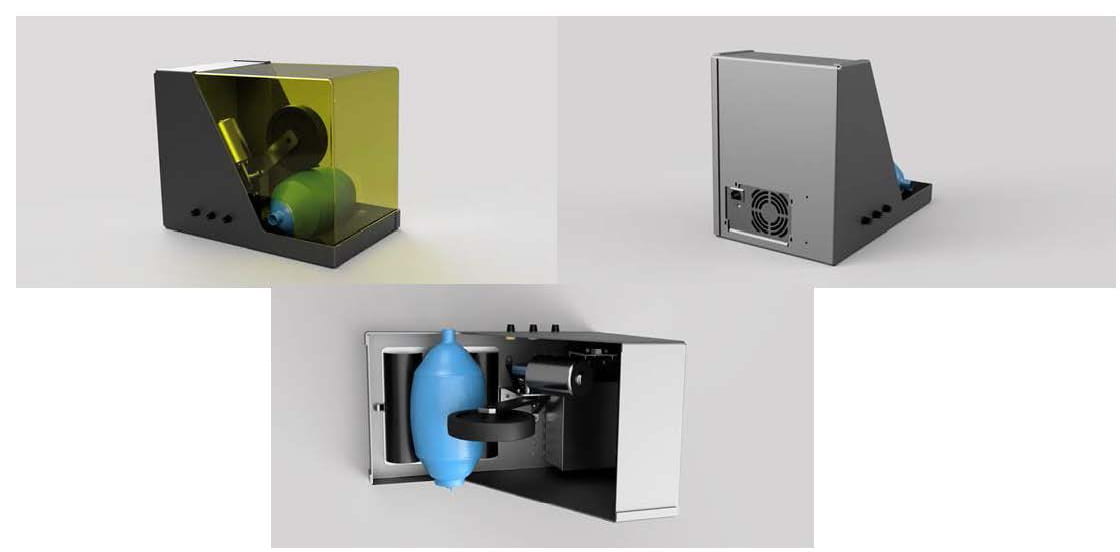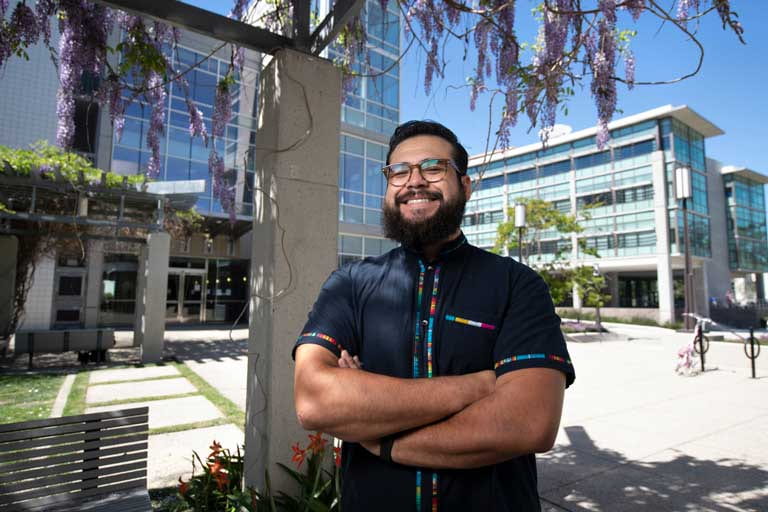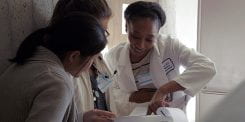Seeing a specialist — from afar
All five University of California medical schools participate in the Specialty Care Safety Net Initiative, which currently links their specialists with 40 clinics statewide.

Debbie McDermott is a pro at navigating complex healthcare systems. For two decades, she has shepherded her daughter Haley through a maze of consultations, exams and procedures – often with less-than-desirable outcomes.
Now, thanks to her six-year experience with UC Irvine pediatric neurologist Dr. Ira Lott, the Bakersfield mother has become an outspoken advocate of telemedicine, a not-so-new but increasingly powerful approach to healthcare delivery.
Every few months, McDermott takes Haley – who has cerebral palsy, severe developmental delays and a seizure disorder – to the local Kern Regional Center to consult with Lott, who sits in front of his computer screen 115 miles away in his UC Irvine Medical Center office.
Head of the university’s telemedicine program, he uses high-speed, two-way audiovisual conferencing equipment to examine Haley and confer with her mother.
For McDermott and her daughter, the results have been dramatic.
The now-21-year-old Haley lacked head and trunk control and spent much of her time slumped down in a wheelchair, McDermott says. One of her legs was contorted, causing painful pressure wounds on her tailbone.
It was Lott who last year, during a routine telemedicine visit, referred Haley to a specialist at CHOC Children’s Hospital, who subsequently performed life-altering spinal fusion surgery.
Haley’s pressure wounds healed; she has better head and trunk control; and instead of crying, her mother says, she smiles all the time. “Now she’s happy. She can sit and be part of the family instead of lying in bed on her stomach,” McDermott says.
Lott, a veteran of 1,200-plus telemedicine consultations, first explored the technology 10 years ago after recognizing the disparity in specialty medical care for rural communities. “Before telemedicine, we had to drive out to these areas and hold clinics. That just wasn’t cost-effective, and it didn’t foster good continuity,” he says.
After conducting dozens of telemedicine sessions and completing a reliability study, Lott was sold: “I became convinced that it was a reliable vehicle for delivering neurology care.”
McDermott enthusiastically agrees. “Bakersfield doesn’t have many quality physicians for real complicated cases,” she says. “I wish more people had this opportunity. I advocate for kids with disabilities, and I always talk about telemedicine.”
Haley is just one of Lott’s many telemedicine patients. In addition to the Kern Regional Center, he consults with a host of other California clinics active in a statewide project called the Specialty Care Safety Net Initiative. The two-year pilot, administered by the Center for Connected Health Policy, seeks to establish permanent telemedicine relationships between medical centers and underserved areas.
All five University of California medical schools participate in the Specialty Care Safety Net Initiative, which currently links their specialists with 40 clinics statewide. Eventually, the project will use the California Telehealth Network, a state- and nationwide broadband system that’ll connect more than 850 healthcare organizations.
Dr. Laura Mosqueda, head of UCI’s geriatrics program, says telemedicine is a win-win for the elderly. “An office visit can mean four to six hours of upset for them,” she says. “If I can have virtual office hours in assisted-care living facilities and nursing homes, it’s good for everybody. The facilities don’t have to transport folks, patients don’t have the upset, and I can be more efficient. They can get quicker, better care.”
Telemedicine also facilitates home monitoring. “There aren’t enough geriatricians to take care of all the older adults. This is a better way to utilize resources,” Mosqueda says.
Nurses are in short supply too, according to Ellen Olshansky, director of UCI’s Program in Nursing Science, who says telemedicine can stretch the field’s reach. She cautions, however, that the human connection – emphasized in nursing education – must be maintained.
“The trend toward e-health is good in many ways,” Olshansky says. “We just have to balance it with human interactions and making sure we’re there for our patients.”
If telemedicine’s next stop is the home, then Calit2’s Telepresence Interactive Operating System, Telios, could be there too.
The software, built on a Web 2.0 platform, allows two-way communication via webcam between medical specialists and individuals in the privacy of their homes. Peripheral instruments can be connected to the system to aid in diagnosis and monitoring.
Unlike expensive, cumbersome and difficult-to-integrate teleconferencing systems, Telios’ modularity and software-based structure offer a low barrier to entry and easy adaptability.
Lott sees the potential: “Telios is a very promising application, because home care is going to become increasingly important in all aspects of medicine in the next decade.”


